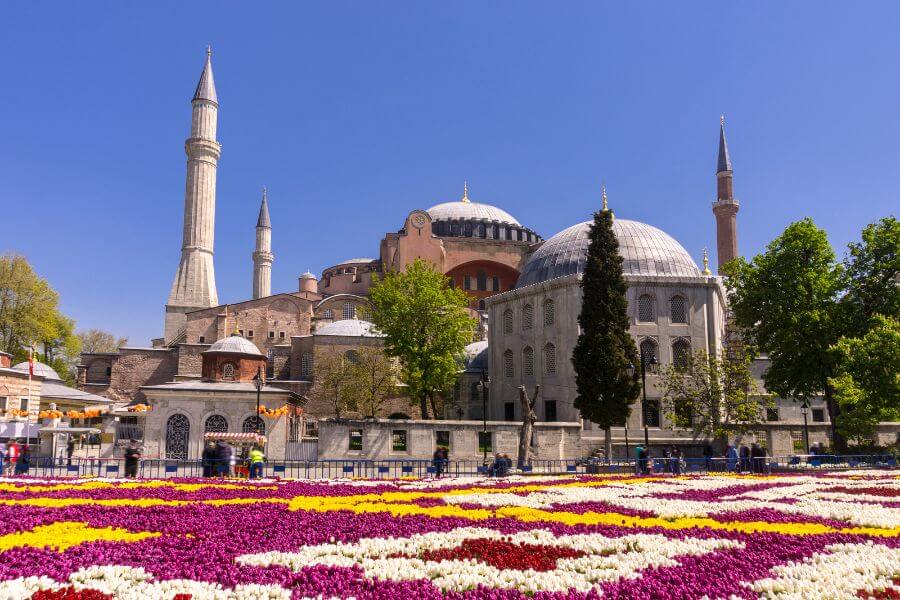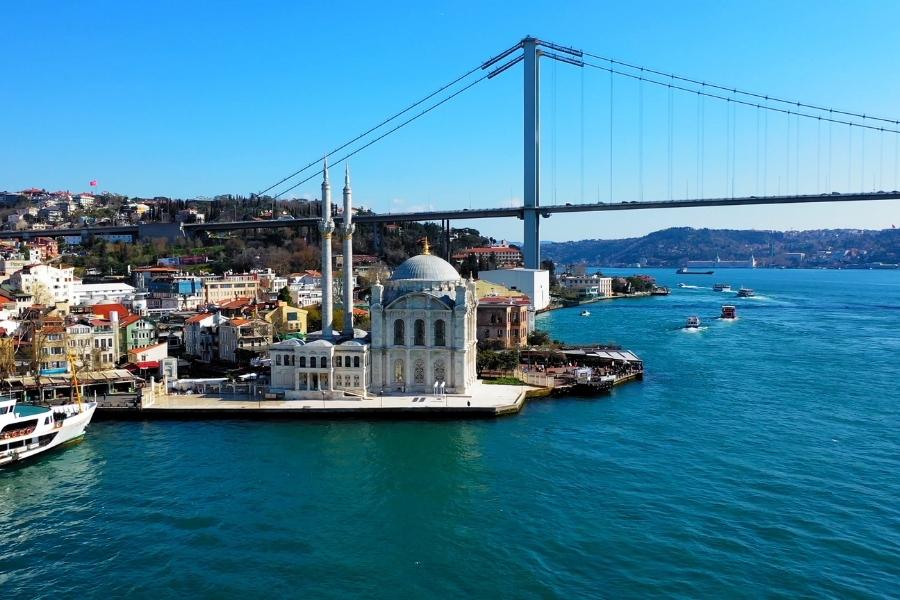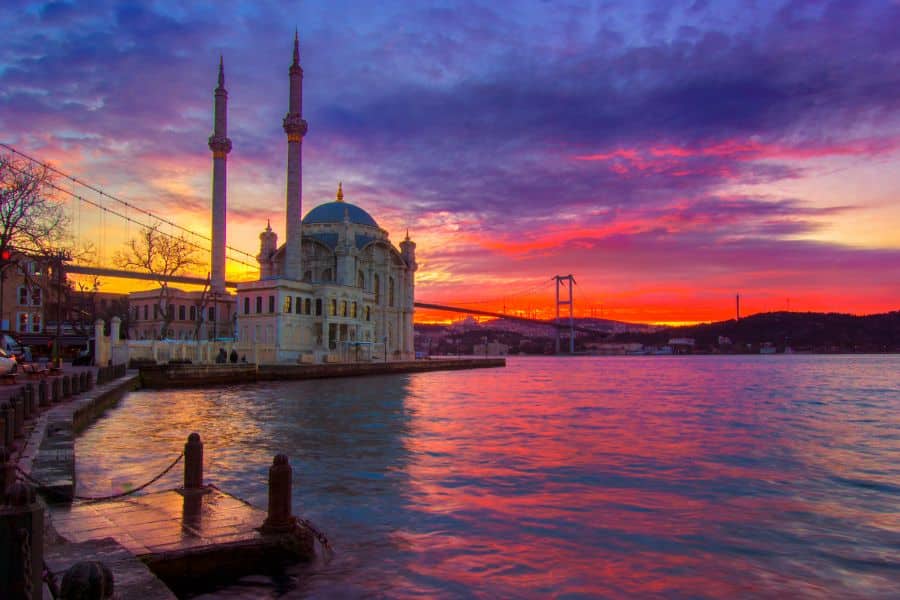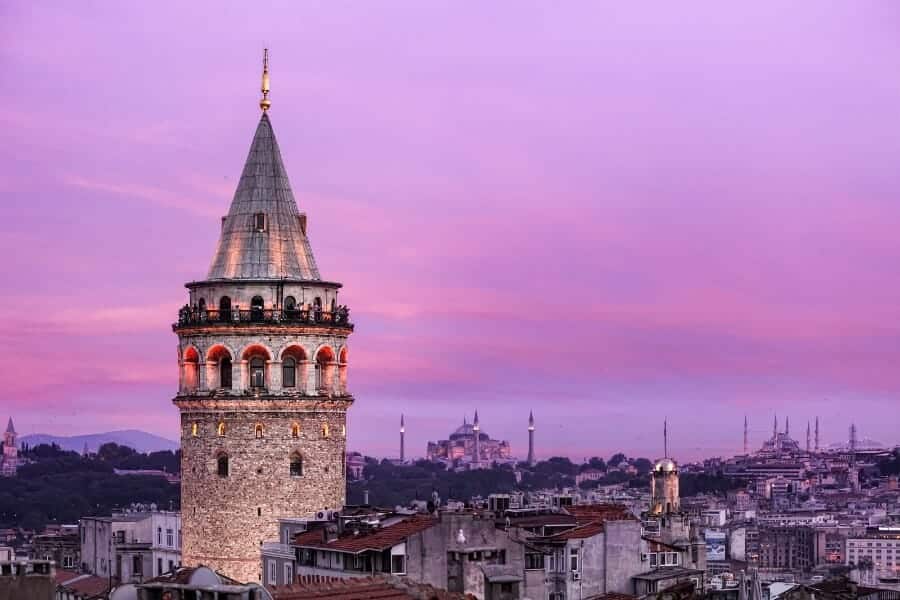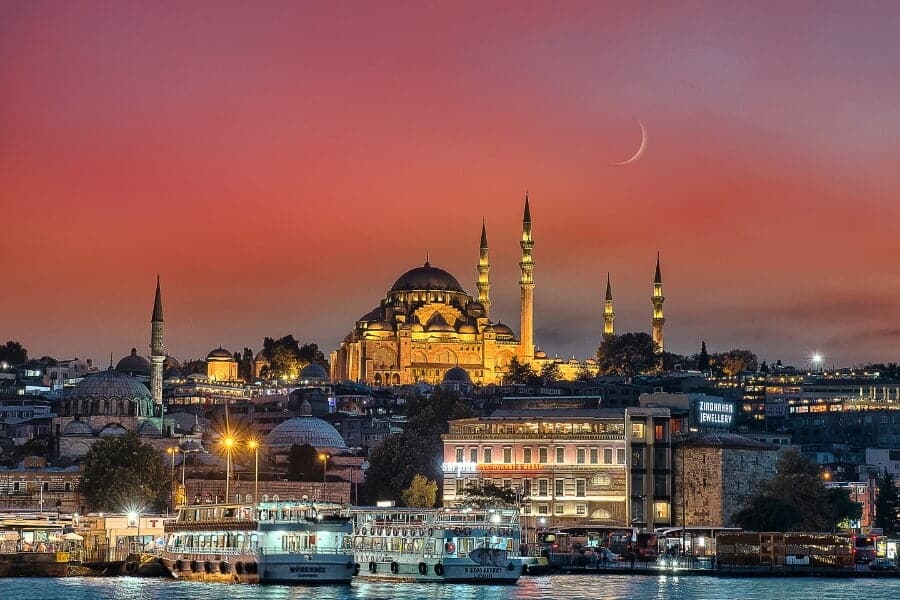Exploring Hagia Sophia: History, Architecture & Legacy
Exploring Hagia Sophia, a timeless masterpiece, stands as one of the most remarkable symbols of Istanbul. With a history spanning over 1,500 years, this architectural wonder has witnessed the rise and fall of empires, serving as a Byzantine church, an Ottoman mosque, a secular museum, and once again, a mosque. Whether you’re a history buff, an architecture enthusiast, or simply a traveler seeking awe-inspiring beauty, Exploring Hagia Sophia is an unmissable destination. Let’s explore its fascinating past, intricate design, and enduring legacy.
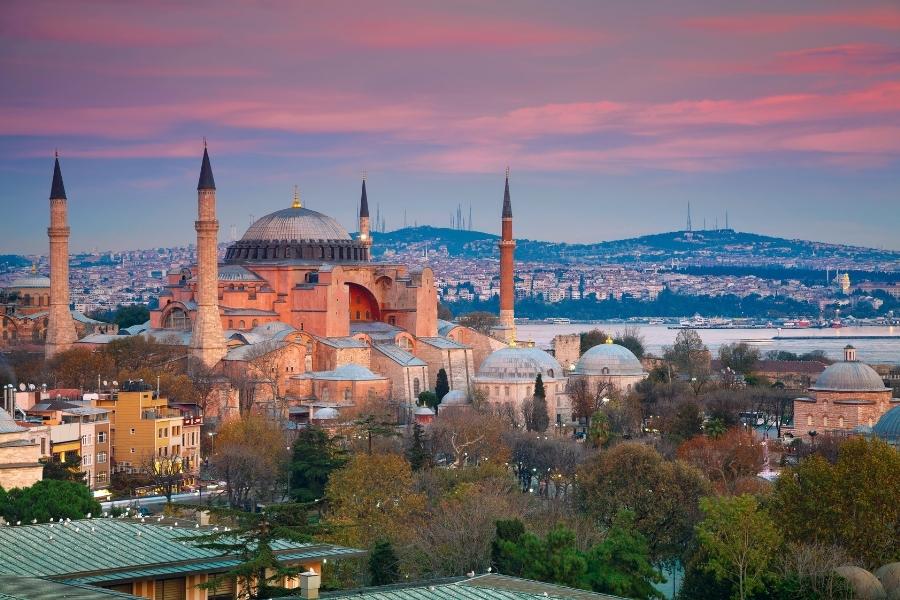
A Journey Through Time: The History of Hagia Sophia
Exploring Hagia Sophia offers insights into its rich history and architectural marvels.
When Exploring Hagia Sophia, one must admire its stunning mosaics and intricate details.
Exploring Hagia Sophia reveals the grandeur of Byzantine architecture and its historical significance.
As you continue Exploring Hagia Sophia, the intricate design and historical context become apparent.
In Exploring Hagia Sophia, visitors can appreciate its role in the Byzantine Empire.
Exploring Hagia Sophia during the Ottoman transformation highlights its cultural significance.
When Exploring Hagia Sophia, one cannot overlook the Islamic elements incorporated by the Ottomans.
Exploring Hagia Sophia today allows visitors to experience its multifaceted history.
Exploring Hagia Sophia: A Journey Through Its History
By Exploring Hagia Sophia, you join millions who have marveled at its beauty and history.
Exploring Hagia Sophia, you will discover architectural features that have inspired generations.
Byzantine Origins (537 AD)
Hagia Sophia, meaning “Holy Wisdom” in Greek, was commissioned by Emperor Justinian I in 532 AD after a devastating fire destroyed the previous church on the site. Designed by the mathematician Isidore of Miletus and the physicist Anthemius of Tralles, this grand basilica was completed in just five years—an astonishing feat for the time. Upon its completion in 537 AD, it became the most significant church in the Eastern Orthodox world.
For nearly 1,000 years, Hagia Sophia was the largest cathedral in the world, serving as the spiritual center of the Byzantine Empire. It was also the site where emperors were crowned and played a crucial role in Orthodox Christianity.
The Ottoman Transformation (1453)
In 1453, Sultan Mehmed II (Mehmed the Conqueror) captured Constantinople and converted Hagia Sophia into a mosque. This transformation introduced Islamic elements, including minarets, a mihrab (prayer niche), and minbars (pulpits). The Ottomans carefully preserved the Byzantine mosaics, covering them instead of destroying them, showcasing their respect for the site’s historical significance.
Museum & Return to a Mosque (1935 – Present)
After the fall of the Ottoman Empire, Mustafa Kemal Atatürk, Turkey’s first president, secularized Hagia Sophia in 1935, transforming it into a museum. This allowed visitors from all over the world to witness the coexistence of Byzantine-Christian and Ottoman-Islamic influences.
However, in 2020, Hagia Sophia was reconverted into a mosque, stirring debates worldwide. Despite this change, it remains open to visitors, continuing to mesmerize millions with its historical grandeur.
Many travelers recommend Exploring Hagia Sophia as a must-do when visiting Istanbul.
Architectural Marvel: Design & Features of Hagia Sophia
The Massive Dome
One of the most astonishing features of Hagia Sophia is its gigantic dome, which soars 55.6 meters (182 feet) high and has a diameter of 31.7 meters (104 feet). At the time of its construction, it was the largest dome in the world, appearing to float effortlessly due to its clever engineering. The dome’s design influenced countless Islamic and Christian structures, including St. Peter’s Basilica and the Blue Mosque.
Byzantine Mosaics
Hagia Sophia’s walls were once adorned with golden mosaics depicting Jesus, the Virgin Mary, angels, and saints. Although many were plastered over during the Ottoman era, restorations have uncovered breathtaking artwork, such as the Deësis mosaic (13th century), featuring a sorrowful Christ flanked by the Virgin Mary and John the Baptist.
Islamic Additions
Following its conversion into a mosque, Hagia Sophia saw the addition of four towering minarets, a grand mihrab facing Mecca, and gigantic circular calligraphy panels with the names of Allah, the Prophet Muhammad, and the first four caliphs. These Islamic elements blend harmoniously with the existing Byzantine aesthetics, making Hagia Sophia a true fusion of civilizations.
Acoustic Perfection
Thanks to its vast dome and marble floors, Hagia Sophia boasts exceptional acoustics. In the past, choirs singing inside would produce a mesmerizing effect, as their voices echoed for nearly 11 seconds—a feature that remains captivating to this day.
Why Visit Hagia Sophia?
- A Walk Through History: Experience a building that has been at the center of major historical shifts.
- Architectural Wonder: Witness one of the most influential structures in world architecture.
- A Blend of Religions & Cultures: Observe the seamless combination of Byzantine and Ottoman influences.
- Breathtaking Art & Interiors: Admire the magnificent mosaics, calligraphy, and dome.
- A Spiritual Landmark: Whether religious or not, the serene atmosphere will leave you in awe.
Adventurer’s FAQ
Exploring Hagia Sophia will leave you with unforgettable memories of its majestic presence.
Q: Is there an entrance fee to visit Hagia Sophia?
A: As of its reconversion into a mosque, entrance is free. However, visitors should check for the latest regulations.
Q: What is the best time to visit Hagia Sophia?
A: Early morning or late afternoon is best to avoid crowds. Fridays can be busier due to Jumu’ah (Friday prayers).
Q: Can non-Muslims enter Hagia Sophia?
A: Yes, non-Muslims can visit, except during prayer times. Visitors should dress modestly, and women may need to cover their heads.
Q: How long does it take to explore Hagia Sophia?
A: Typically, 1-2 hours is sufficient to explore its highlights.
Q: Are guided tours available?
A: Yes, guided tours are available and highly recommended for a deeper understanding of Hagia Sophia’s history.
Hagia Sophia: A Testament to Timelessness
Stepping into Hagia Sophia is like stepping through the pages of history. Its walls whisper stories of emperors, sultans, and civilizations that have left their mark on this breathtaking masterpiece. Whether you come for its history, art, or sheer grandeur, Hagia Sophia never ceases to inspire awe. As one of the world’s most magnificent structures, it stands as a reminder that beauty and history transcend time and belief.

